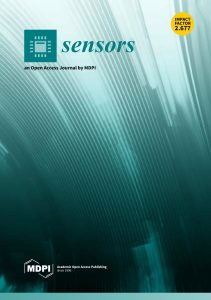Publications

Objective Assessment of Regional Stiffness in Vastus Lateralis with Different Measurement Methods: A Reliability Study
Authors: Alfredo Bravo-Sanchez 1, Pablo Abian 2, Jorge Sanchez-Infante 1, Paula Esteban-Gacia 1, Fernando Jimenez 1, Javier Abian-Vicen 1
Affiliations:
- Performance and Sport Rehabilitation Laboratory, Faculty of Sport Sciences, University of Castilla-La Mancha, 45071 Toledo, Spain
- Faculty of Humanities and Social Sciences, Comillas Pontifical University, 28049 Madrid, Spain
Journal: Sensors - May 2021, Volume 21, Issue 9, Article no.3213 (DOI: 10.3390/s21093213)
-
Field & Applications:
- Medical
- Reliability
The objective of this study was to evaluate the reliability of four methods of assessing vastus lateralis (VL) stiffness, and to describe the influence of structural characteristics on them. The stiffness of the dominant lower-limb’s VL was evaluated in 53 healthy participants (28.4 ± 9.1 years) with shear wave elastography (SWE), strain elastography (SE), myotonometry and tensiomyography (TMG).
The SWE, SE and myotonometry were performed at 50%, and TMG was assessed at 30%, of the length from the upper pole of the patella to the greater trochanter. The thickness of the VL, adipose tissue and superficial connective tissue was also measured with ultrasound. Three repeated measurements were acquired to assess reliability, using intraclass correlation coefficients (ICC). Pearson’s correlation coefficients were calculated to determine the relationships between methodologic assessments and between structural characteristics and stiffness assessments of the VL.
Myotonometry (ICC = 0.93; 95%-CI = 0.89,0.96) and TMG (ICC = 0.89; 95%-CI = 0.82,0.94) showed excellent inter-day reliability whereas with SWE (ICC = 0.62; 95%-CI = 0.41,0.77) and SE (ICC = 0.71; 95%-CI = 0.57,0.81) reliability was moderate. Significant correlations were found between myotonometry and VL thickness (r = 0.361; p = 0.008), adipose tissue thickness (r = -0.459; p = 0.001) and superficial connective tissue thickness (r = 0.340; p = 0.013).
Myotonometry and TMG showed the best reliability values, although myotonometry stiffness values were influenced by the structural variables of the supra-adjacent tissue.
Keywords: shear wave elastography; strain elastography; MyotonPRO; tensiomyography; mechanical properties
In conclusion, SWE and SE are reliable tools for evaluating the stiffness of VL, and a positive correlation was found between both types of elastography despite differences in their measurement principles. Although MyotonPRO and TMG measurements exhibited excellent intra- and inter-day reliability values, no correlation was described between MyotonPRO, TMG and elastography exams—SWE and SE—which could suggest that the MyotonPRO and TMG assess a different stiffness from elastography techniques. In addition, MyotonPRO exams are affected by superficial tissue thickness, so future studies should establish the maximal thickness of suprajacent tissue that does not influence myotonometry exams. Authors should discuss the results and how they can be interpreted from the perspective of previous studies and of the working hypotheses. The findings and their implications should be discussed in the broadest context possible. Future research directions may also be highlighted.


